Hand-made teaching | using American method to extract coffee with ice in chemex pot.
For professional baristas, please follow the coffee workshop (Wechat official account cafe_style)
American style coffee extracted with ice in chemx pot
[ice extraction process]
60 grams of powder (light baked beans)
The water temperature of 205 degrees Fahrenheit is 96 degrees.
Moderate grinding
450 grams of ice
Pour in 100 grams of water and stir
Inject another 350 grams of water
You will find that for the same coffee bean, the American pot will be a little more bitter and astringent than the coffee made by hand. the key is that the high water temperature of the American pot leads to this phenomenon. The average American pot is actually sprayed and extracted through atmospheric pressure.
To put it simply, when the power of the American kettle is constant and the external environmental factors do not change much, the extraction water temperature and flow speed are relatively stable, and the extraction temperature is too high, and the flow speed is slow, so that there will be the phenomenon of over-extraction. This is how bitterness comes from, and what Americans like is such bitterness.
There is a difference between American style and Japanese style. Although both American and Japanese styles may make the same filter cup, there are some differences in roasting, grinding, filter paper, water temperature and manipulation of coffee beans.
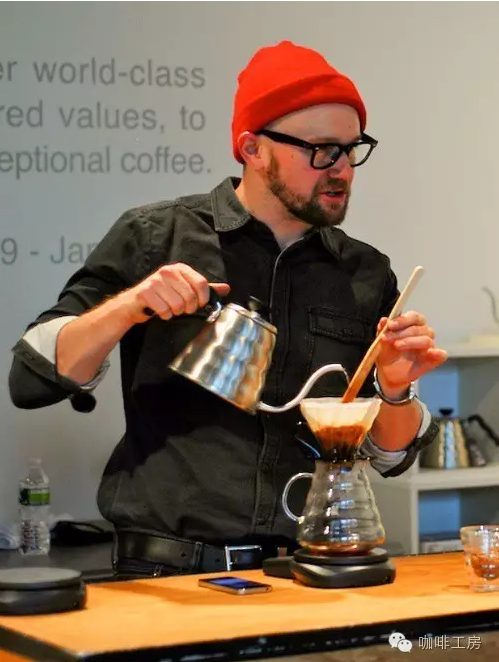
The biggest difference is that American hand brewing requires stirring coffee powder with a stirring stick, which is similar to the way we do siphon pots, while Japanese, Korean, Taiwan and domestic hand-made coffee only draws circles with water and never stirs coffee powder with sticks or bamboo slices.
The typical American flavor is mainly medium baking and deep baking, full-bodied + mild bitter + sweet. It has both bitter and sweet personality. During the grinding, the water temperature is between 80 and 85 degrees, and the water flushing speed is medium speed.
Deep baking is fine grinding, the water temperature is between 85 and 90 degrees, and the fine water is slow and bitter. Americans often drink a cup of coffee in the morning in order to wake up quickly, also known as "dawn coffee."
[American brewing is relatively simple]:
First, the powder should be ground finely, which is basically similar to the Italian style.
Second, the water temperature is about 90 degrees.
The third is stew, which is similar to Japanese style.
Fourth, one side slowly pour water to draw a circle, and after the water is cut off, it is stirred with a wooden spoon or a piece of bamboo, which is also divided into different techniques: one is to stir the cross back and forth; the other is to draw the circle like stirring.
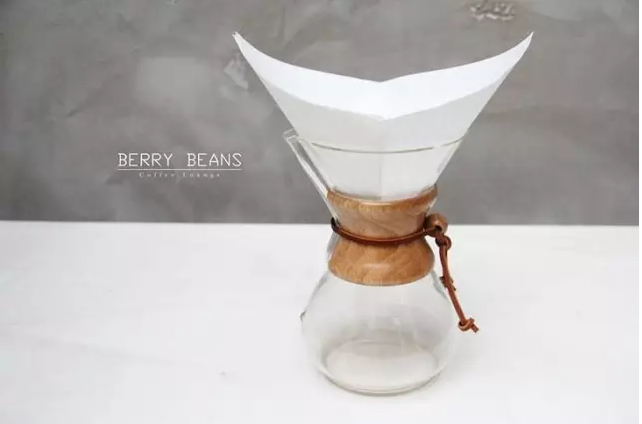
For extraction, there are four important points:
, grinding degree, powder ball size, the less the powder ball, the higher the extraction rate (the powder ball is small, but more, the surface area of contact with water is large), so when the taste is not enough, the easiest way is to adjust it fine.
In view of the above two points, we can explain why the wear is poor, easy to produce miscellaneous smell, because there is a lot of very fine powder, which partially increases the extraction rate, showing a mixed smell.
When the time and other parameters are the same, the longer the time, the higher the extraction rate, which is well known.
Stirring and adding external force will increase the extraction rate, whether through additional utensils or through water flow.
Beans with different baking degrees and different water temperatures
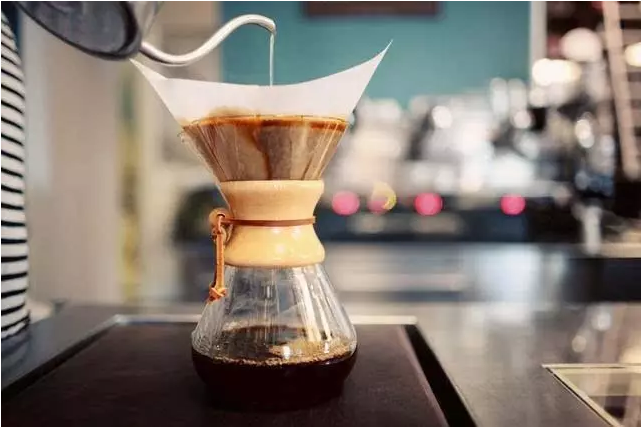
Steaming and mixing method
Steaming and stirring method: stir with a stirring stick, usually in the steaming stage, a cross stirring to make the water fully contact with coffee powder and increase the release of aromatic substances. After that, the methods are different, some after the first stage of water injection, the second stage of water injection or the third stage of water injection, some will do a round stirring action, some will use one-cut flow and then stir, and some will do all three stages of stirring. As long as it is properly controlled, it can be done in any way.
This method can not only effectively enhance the release of aromatic substances, but also has a significant effect on the special flavor. Not so good is that it is difficult to grasp the degree of mixing, stirring more will have a stiff sour taste, a long time will be bitter, the strength must also be feminine.
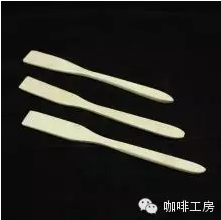
Advantages: the mixing method can amplify the advantages of the coffee beans, especially enhance the taste of the coffee beans, and will not be too thin.
Disadvantages: although its flavor is more obvious, its return is weakened a lot. And this method has high requirements for the quality of coffee beans, if you use poor coffee beans, it will only infinitely magnify its bad flavor. In addition, because the grinding degree of coffee powder required by this method is very fine, coupled with sufficient stirring, it is easy to over-extract improperly.
In my opinion, making coffee is a very small thing, and it's always fun to forget the form and try new ways. The way of stirring and cooking is simple, common and cool.
1, in the steaming stage, the amount of water is steaming mixing > direct water injection > standard steaming; in the later stage, direct water injection > steaming stirring > standard steaming; however, if the initial stifling water volume is 50 grams (corresponding to 20 grams of powder), then the whole instantaneous water trend chart will be different; the amount of water injection in the steaming stage will determine the instantaneous water trend in the later stage, so the instantaneous water trend chart in the article will also change.
2, from the point of view of steaming and stirring, I will take a shorter extraction time than the standard hand extraction (because since stirring accelerates the possibility of uniform extraction, of course it is not necessary to do so long extraction time).
In your experiment, steaming and stirring on the extraction time = standard steaming = direct water injection, so the practice of limiting the same extraction time is likely to lead to the view that the coffee made by steaming and stirring is relatively turbid and dull. Because the coffee may have been overextracted.
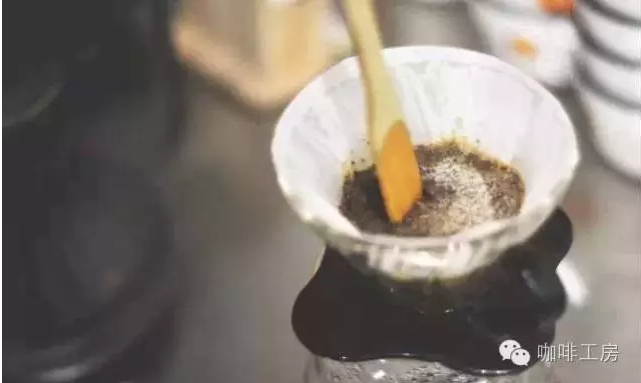
How to stir to make a good coffee
Recently, we found that many people began to add wooden sticks to the process of making hand-brewed coffee, which aroused our curiosity. Isn't it necessary to stir the coffee powder with water all the time?
When I asked this question, I decided to prove it by experiment.
According to the extraction principle, if there is water and the extract at the same temperature at the same time, and the same solution should be extracted under the same disturbance, we do not think that coffee will have the same result at the micro level. however, a certain flavor trend can be summed up after many experiments, so we designed the following three methods to carry out the experiment.
1. Direct water injection method: continuous water non-stuffy steam spiral water injection method
two。 Standard steaming method: steaming for 30 seconds (medium baking) and then spiral water injection
3. Steaming and stirring method: steaming for 30 seconds (medium baking) and stirring with sticks for 10 seconds before continuing spiral water injection
In the course of the experiment, the degree of grinding, the amount of powder, the ratio of water to powder, the total water injection time and the water temperature of each kind of coffee beans are equal. The three kinds of cooking processes are:
Direct water injection method: 320g water is injected at a uniform speed in the whole process, the water injection time for medium baking is 2min, and the water injection time for deep baking is 1min30s.
Standard steaming method: 20g hot water was injected first, moderately roasted coffee powder was steamed for 30s, then water was injected at a uniform speed and finished at 2min.
Steaming and stirring method: first inject 50g hot water (due to too little water can not be stirred, so 50g hot water is injected here for steaming time), stir so that the water is in uniform contact with coffee powder, then steam moderately baked coffee powder to 30s and then water injection is completed during 2min; after deep baking and steaming to 15s, water injection is completed at 1min30s.
When discussing from the two parts of senses and data, it is difficult for us to explain why there is little difference between the direct water injection method and the steaming mixing method, but the flavor modulation is two extremes. It can only be inferred from the results that the steaming mixing method accelerates the extraction of flavor substances in a relatively short time, dissolves some heterocyclic macromolecules, and causes a relatively turbid taste.
In the direct water injection method, the flow also has an effective stirring effect, and effectively increases the extraction rate of small molecular acidic substances, so it shows a bright sense of acid in the sense.
We sincerely look forward to more advanced experiments to help explain the essential differences between the two mixing methods.
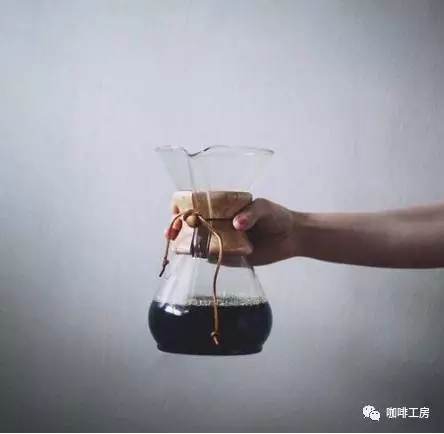
Some of the contents of the website refer to:
The official website of Brista
Important Notice :
前街咖啡 FrontStreet Coffee has moved to new addredd:
FrontStreet Coffee Address: 315,Donghua East Road,GuangZhou
Tel:020 38364473
- Prev
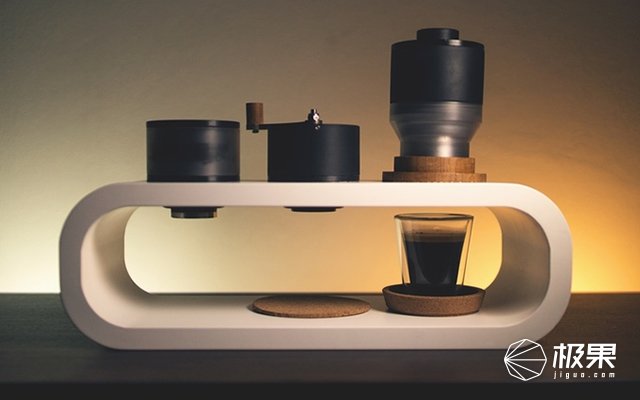
Recommend | good-looking coffee machine appears in crowdfunding, hand coffee can also be operated foolishly.
Professional baristas Please follow the Coffee Workshop (official Wechat account cafe_style) since the year before last, cafes in many cities have hand-brewed coffee. If there is no hand flush in the menu of a cafe, it is embarrassing to say hello to customers. However, the principle of hand flushing is not difficult, and it can be realized by itself at home. By the same token, coffee has a strong demand for coffee utensils loved by Vietnam.
- Next
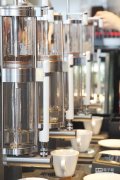
Why is the steam punk coffee machine, a boutique coffee artifact, called a supercar in a coffee machine?
The whole row of Steam Punk Coffee machines is in a row, spectacular and stylish. Photo / Yao Shun Brown Coffee second Generation shop Mr. Brown Specialty Coffee, introducing blue mountain coffee beans including Clydesdale Manor in Jamaica, brewing boutique coffee with steam punk. Photo / Yao Shun Brown Cafe will introduce coffee industry into the new brand Mr. Brown Specialty Coffee store
Related
- What is the Philharmonic pressure? How to use Philharmonic pressure to make delicious coffee
- Why does a hand grinder have more fine powder than an electric grinder?
- In addition to the hot mom, what is the difference between the versions of EK43 | ditting and Mahdi ek43?
- What kind of equipment do you need to make coffee by hand? Introduction to novice starter cooking equipment tools
- Espresso needs to be ground how thick and thin scale entry Italian Coffee Machine Bean Grinder investigation and Grinding course
- How much does it cost to open a small private cafe? How much does it cost to learn coffee? How to operate it?
- The difference between the flavor characteristics of hand-brewed coffee and coffee maker is hand-brewed coffee really better than coffee maker? Can I use a coffee machine to make coffee beans by hand?
- The difference between 01 and 02 of hario v60 filter cup what is the difference between 01 and 02 filter cup opening and cooking flavor
- What's the difference between the smart cup and the French kettle? Which is better, the French kettle or the Smart Cup?
- What's the difference between a smart cup and a V60 filter cup? The difference between the taste of smart cup and hand-brewed coffee

